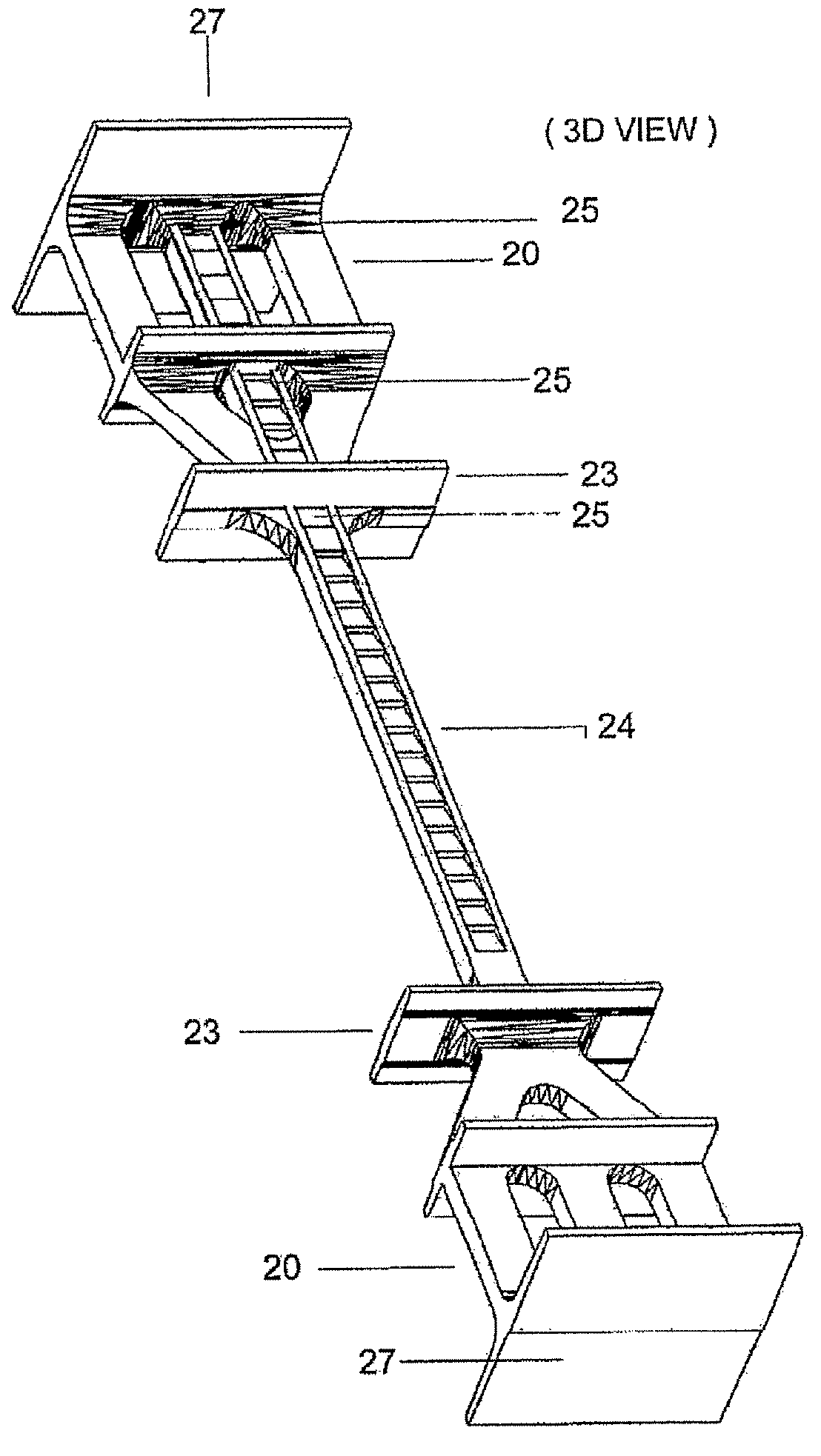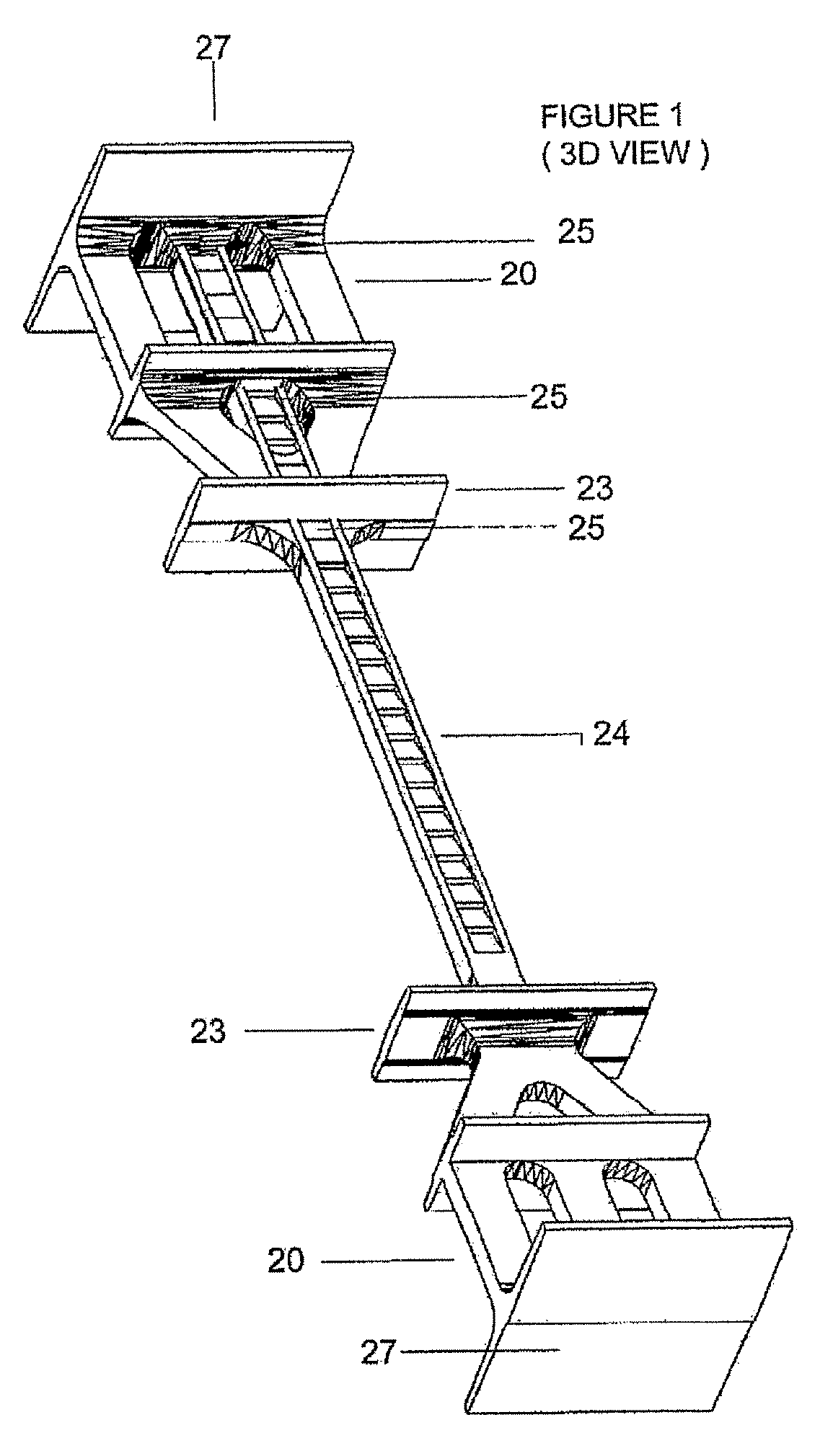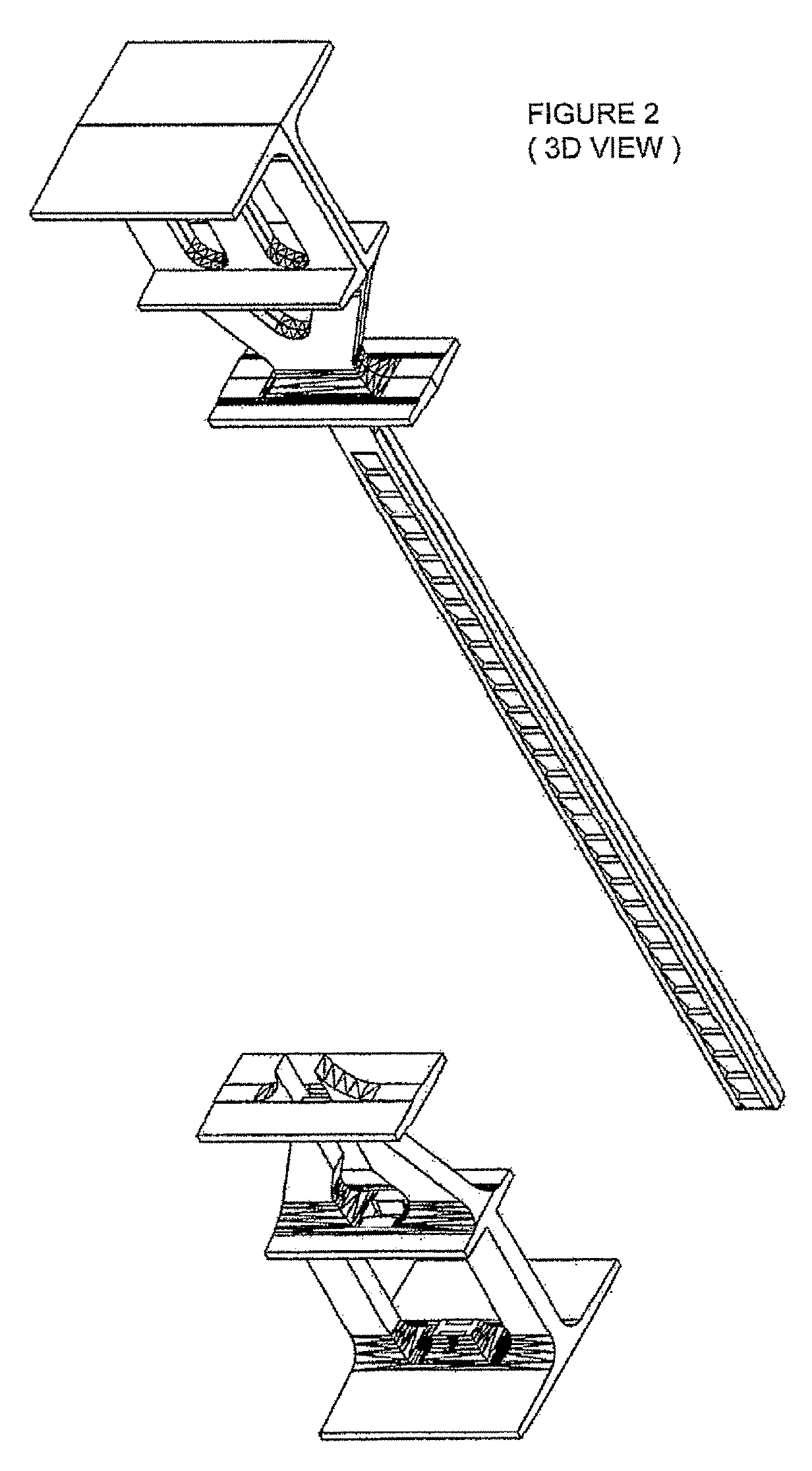Insulated concrete form system with variable length wall ties
a technology of variable length and concrete, applied in the field of wall ties, can solve the problems of high cost of assembly, poor insulation effect, poor insulation effect, etc., and achieve the effects of increasing humidity, increasing mechanical loading, and high carrying capacity
- Summary
- Abstract
- Description
- Claims
- Application Information
AI Technical Summary
Benefits of technology
Problems solved by technology
Method used
Image
Examples
Embodiment Construction
[0062] Referring to FIG. 1 it can be seen that it presents straight tie (21), which can be adjusted to a necessary wall thickness by means of the female part of straight tie (22), if necessary. The firm connection of parts (21) and (22) is accomplished by means of lateral teeth on male part (24) and the teeth on female part of the tie (25), (30) and (35). In FIG. 4 the side view of the variable straight tie with the set lateral teeth can be seen. The tie carrier is dimensioned in such a way, that it might carry the weight of the mounting and that its lateral teeth (24) and (25) could endure all necessary tensile deformations, in accordance with this invention the variable ties can be used as the mounting carriers in the wall boarding, also the ribbed bars as well as the nets can be used. Also, the setting of the vertical boarding on the corners of the object is easier and faster. Distancing members (23) on the variable tie are placed on the regular distance from the wall and they ar...
PUM
 Login to View More
Login to View More Abstract
Description
Claims
Application Information
 Login to View More
Login to View More - R&D
- Intellectual Property
- Life Sciences
- Materials
- Tech Scout
- Unparalleled Data Quality
- Higher Quality Content
- 60% Fewer Hallucinations
Browse by: Latest US Patents, China's latest patents, Technical Efficacy Thesaurus, Application Domain, Technology Topic, Popular Technical Reports.
© 2025 PatSnap. All rights reserved.Legal|Privacy policy|Modern Slavery Act Transparency Statement|Sitemap|About US| Contact US: help@patsnap.com



